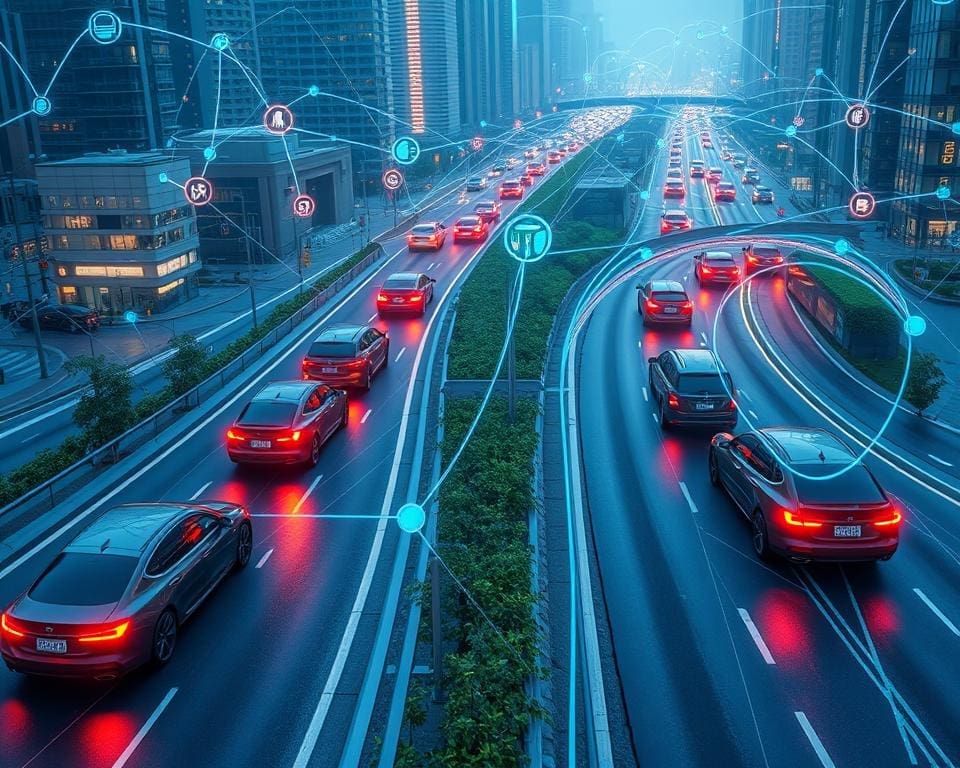In today’s fast-paced world, connected cars are revolutionising the landscape of automotive technology. These intelligent vehicles harness real-time data to significantly enhance the driving experience. With the capability to communicate seamlessly with other devices and infrastructure, connected cars are at the forefront of improving road safety and efficiency. As major players like Tesla, Ford, and BMW strive to adopt these innovations, the future of driving is becoming not only more enjoyable but also more sustainable.
As we delve deeper into the advantages of connected vehicles, it is clear that their ability to utilise instant feedback and advanced analytics is paving the way for a brighter, safer driving future.
Understanding Connected Cars and Their Impact on Driving
The landscape of driving is undergoing a remarkable transformation, largely driven by the evolution of automotive technology. This transition from traditional vehicles to connected cars has reshaped how we interact with our cars and the road. As we explore this shift, a deeper understanding of connected cars becomes essential, revealing their potential to redefine driving experiences.
The Evolution of Automotive Technology
Initially, vehicles functioned primarily as mechanical systems, relying on simple engineering principles. Over time, the integration of advanced electronics and software has propelled the automotive industry into a new era. Manufacturers like Volkswagen and Audi are leading the charge in embracing connected vehicles. By incorporating IoT technology, these brands have enhanced vehicle functionalities, ensuring that drivers enjoy a smarter, more efficient driving experience.
How Smart Vehicles are Transforming Mobility
Smart vehicles are not just about improved performance; they represent a significant shift in mobility transformation. With features such as automatic updates and predictive maintenance, these cars offer unparalleled convenience and reliability. Enhanced navigation systems also play a crucial role, guiding drivers through urban landscapes with ease. As understanding connected cars deepens, it becomes clear that these advancements will significantly influence urban mobility patterns, ensuring a seamless journey for drivers and passengers alike.

Connected Cars: Real-Time Data for Better Driving
In the age of connected vehicles, real-time data serves as a catalyst for significant efficiency enhancement. This information influences numerous aspects of driving, from optimising fuel consumption to reducing emissions. Understanding how this data works provides insight into the future of driving.
Enhancing Efficiency Through Real-Time Data
Real-time data collected from connected vehicles allows for insightful analysis of driving habits. For instance, brands like Ford use advanced telematics systems to provide feedback on driver behaviour, which in turn helps improve fuel efficiency. Techniques such as predictive analytics can suggest the most economical driving styles, thereby contributing to a lower carbon footprint.
The Role of GPS Tracking in Connected Vehicles
GPS tracking is integral to the performance of connected vehicles, offering live updates concerning traffic conditions and route optimisation. This technology aids drivers by indicating the quickest paths, avoiding congestion, and even locating nearby parking spaces. As a result, drivers experience time savings and enhanced driving comfort, all supported by real-time data.
The Importance of Vehicle Communication
Vehicle communication serves as the backbone of modern automotive innovation, paving the way for safer and more efficient journeys. With the rise of smart mobility, drivers benefit from enhanced connectivity that enriches their daily driving integration experience.
How Telematics Solutions Facilitate Communication
Telematics solutions play a vital role in enabling vehicles to exchange information with one another as well as with infrastructure. These technologies, exemplified by leading brands like Verizon Connect and Bosch, provide critical insights into vehicle performance and maintenance needs. By harnessing the power of real-time data, telematics becomes a significant enhancement in vehicle communication, ensuring that drivers are informed and equipped to act on any issues that may arise.
Integrating Smart Mobility into Daily Driving
Integrating smart mobility into daily driving transforms how individuals interact with their vehicles and the surrounding transport networks. This seamless connectivity allows for various modes of transport to operate in harmony, making the driving experience more enjoyable and efficient. Users can easily connect to public transport systems and personal devices, ensuring that every aspect of their journey is synchronised.
Real-Time Data: A Game Changer in Driving Experience
In the rapidly evolving landscape of automotive technology, real-time data has emerged as a revolutionary force, significantly enhancing the driving experience. By providing instant access to vital information, connected cars are transforming how we navigate the roads, focus on safety improvement, and optimize our journeys.
Improving Safety with Instant Feedback
Connected vehicles, equipped with advanced sensors and data analytics, can offer immediate feedback to drivers. This instant information dramatically improves safety. For instance, systems such as Ford’s Co-Pilot360 provide lane-keeping assistance and collision warnings, alerting drivers to potential hazards. The quick reactions facilitated by real-time data allow for a reduction in accident risks, fostering a safer driving environment.
Optimising Routes with Advanced Data Analytics
Beyond safety, real-time data plays a crucial role in route optimisation. Advanced analytics consider current conditions like traffic, weather, and road closures, enabling drivers to make informed decisions about their routes. This not only saves time and fuel but also alleviates stress during travel. With an ever-increasing amount of data at their fingertips, drivers can enhance their journeys, making every trip more efficient and enjoyable.
The Future of Connected Cars and Automotive Technology
The landscape of future connected cars is evolving dynamically, driven by a confluence of automotive technology trends and advanced innovations. As manufacturers and tech giants collaborate, new possibilities emerge, rendering vehicles not just modes of transportation but holistic extensions of personal technology.
Trends in Connected Vehicle Innovation
Connected vehicles are ushering in an era where technology seamlessly integrates with daily life. Innovations to look out for include:
- Enhanced connectivity features allowing for real-time vehicle-to-vehicle communication.
- Smart sensors that offer improved navigation and safety mechanisms.
- Personalisation options tailored to individual driver preferences.
These advancements will significantly reshape how people interact with their cars, making driving not only safer but also more enjoyable.
The Role of AI and Big Data in Driving Dynamics
The AI role in driving dynamics is crucial for understanding real-world performance and predicting driver behaviour. The utilisation of Big Data allows manufacturers to analyse vast amounts of information to enhance vehicle performance. By examining:
- Consumer preferences and driving habits to refine vehicle design.
- Real-time data from sensors to optimise driving conditions and reliability.
- Predictive analysis that anticipates maintenance needs before issues occur.
These technologies will not only elevate the driving dynamics of future cars but will also ensure a superior user experience, paving the way for a groundbreaking shift in personal mobility.
Challenges and Opportunities of Connected Vehicles
As the automotive industry evolves, the integration of connected vehicles presents both challenges and opportunities that cannot be overlooked. One of the primary challenges of connected vehicles lies in cybersecurity threats, which pose significant risks to the safety and privacy of drivers and passengers. Moreover, there is an urgent need for standardised regulations to govern these technologies, ensuring a consistent framework for manufacturers and consumers alike.
On the flip side, the rise of 5G technology serves as a beacon of opportunity for improving communication speeds and infrastructure compatibility, laying the groundwork for innovative solutions. Automotive manufacturers can seize this moment, exploring innovative product offerings that enhance connectivity features while building stronger customer relationships. These advancements not only pave the way for a more interconnected driving experience but also position brands at the forefront of the industry’s digital transformation.
Furthermore, connected vehicles could play a crucial role in addressing environmental concerns, contributing to a reduction in carbon footprints by optimising routes and improving fuel efficiency. By harnessing the potential of these technologies, the automotive industry can tackle not only the current challenges but also unlock a future filled with sustainable driving solutions, ultimately redefining mobility for generations to come.









